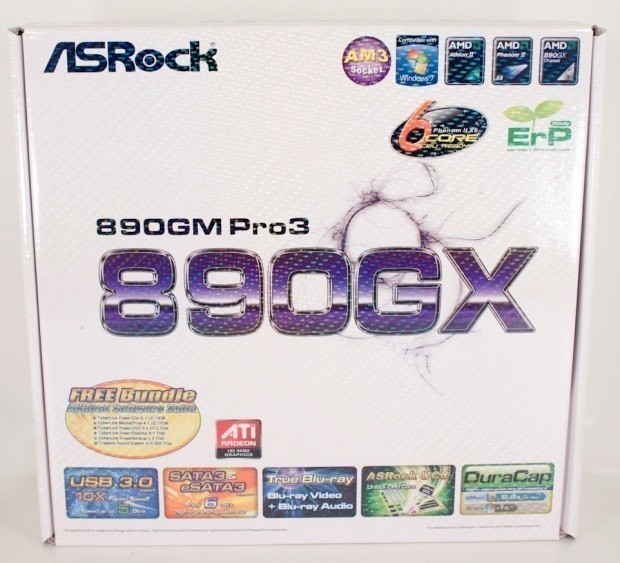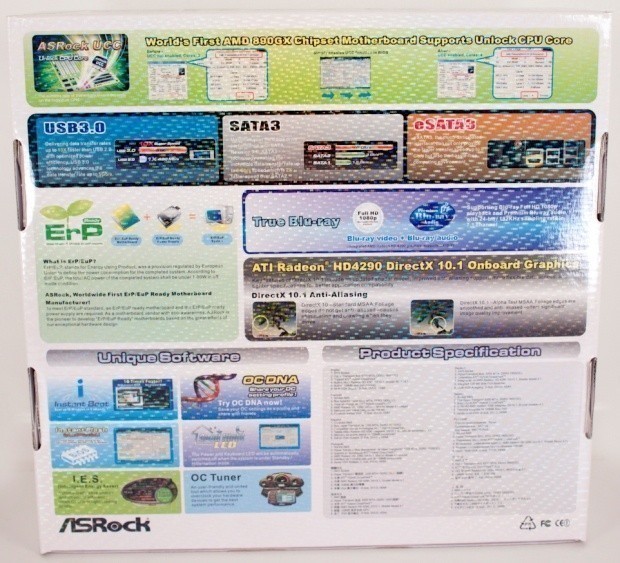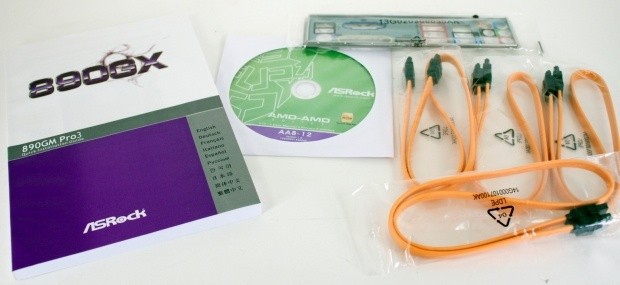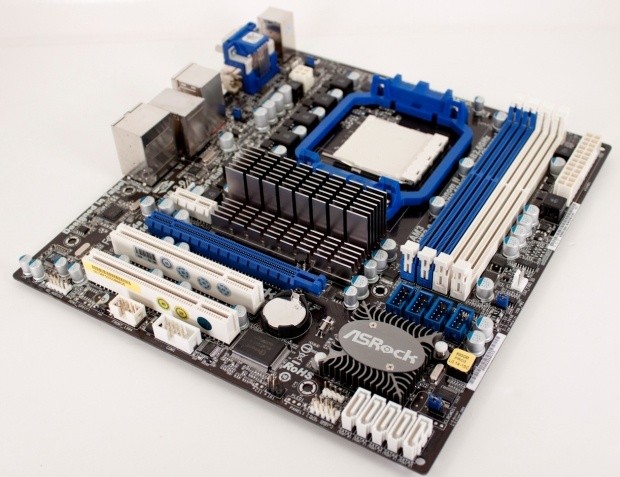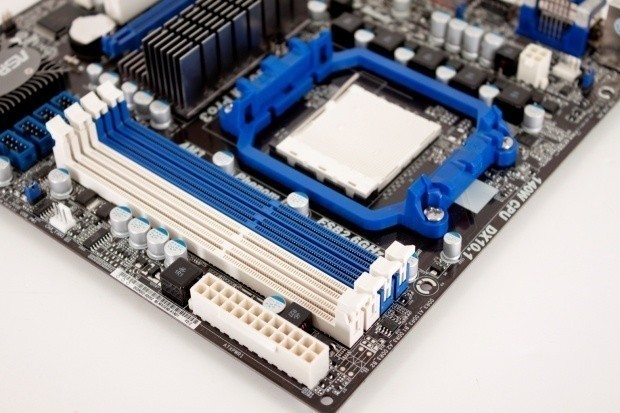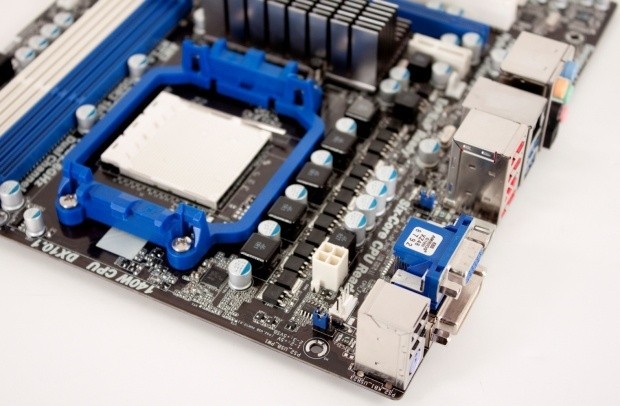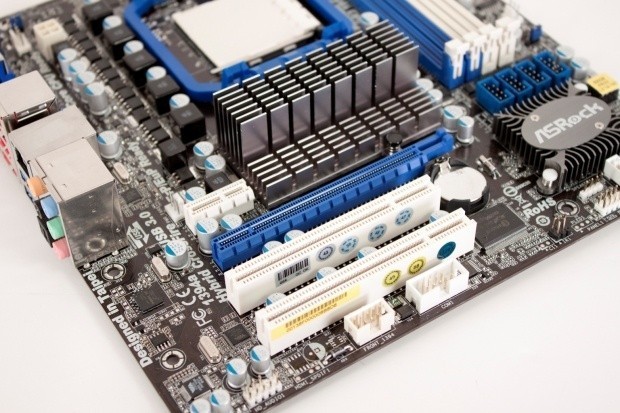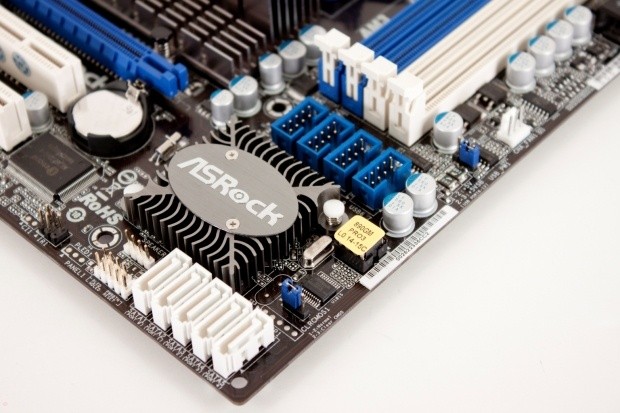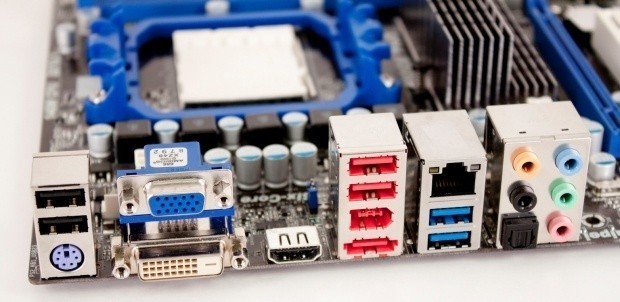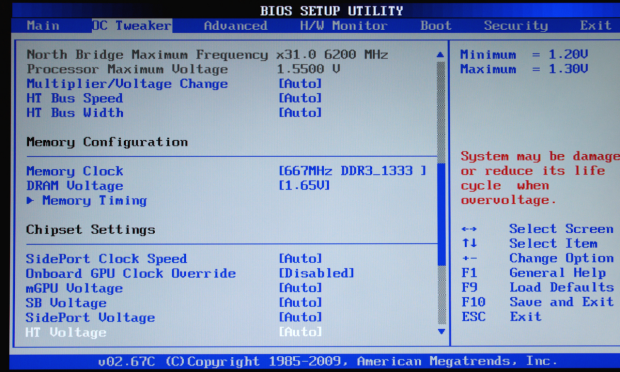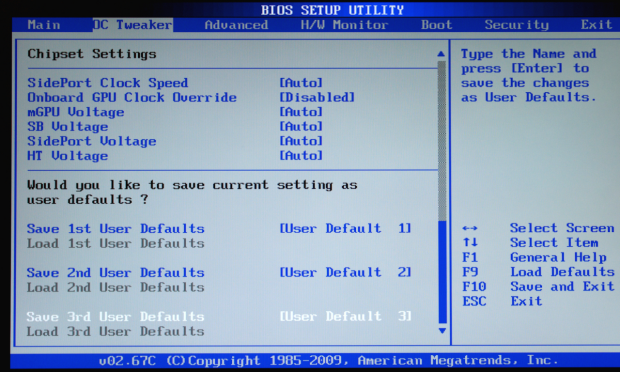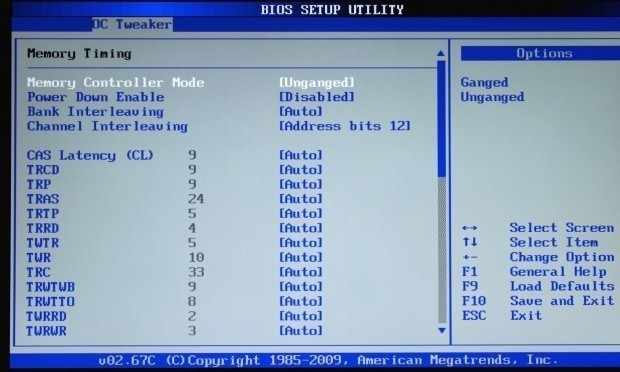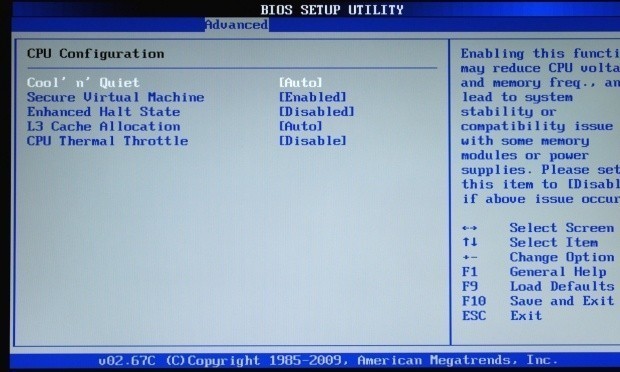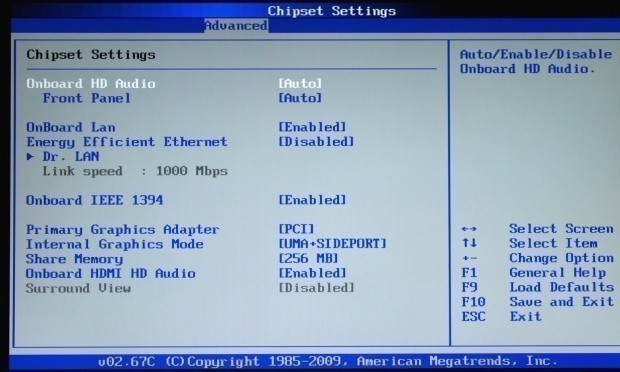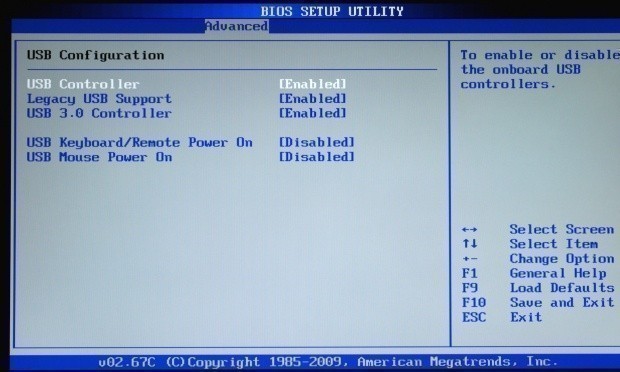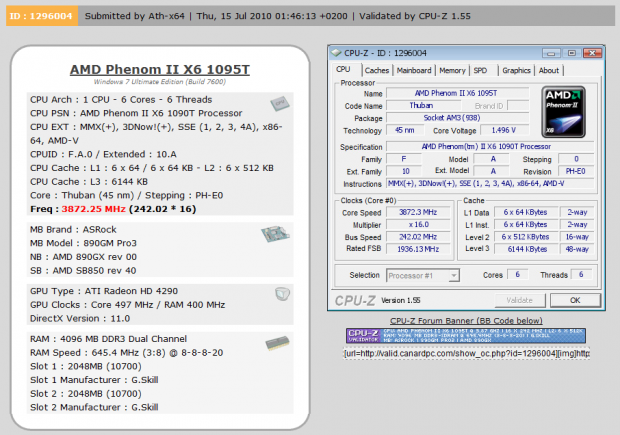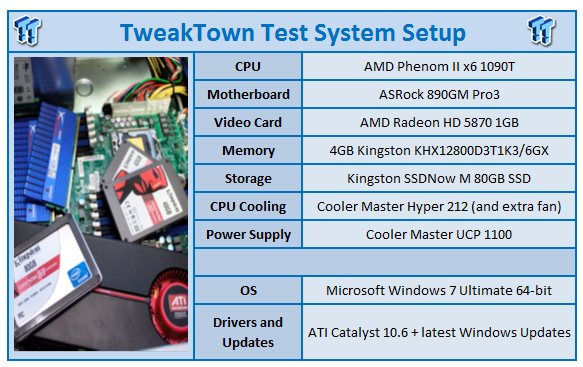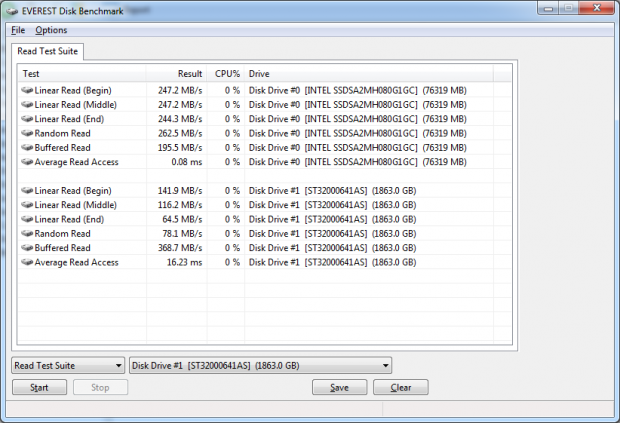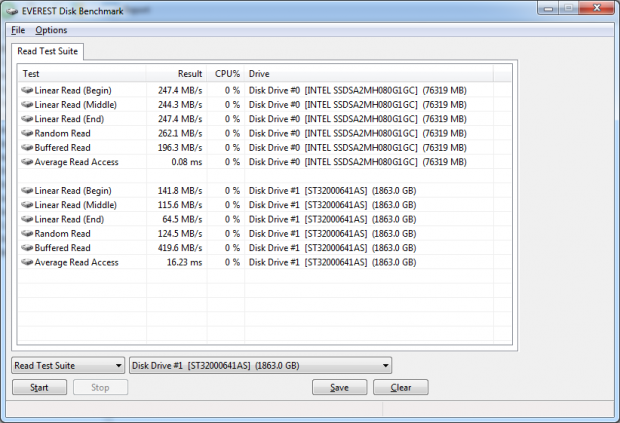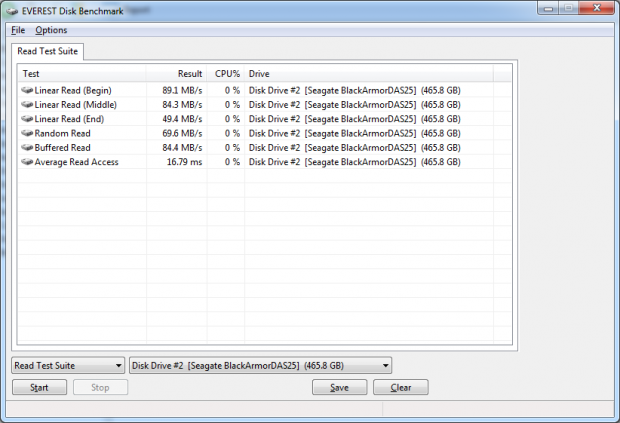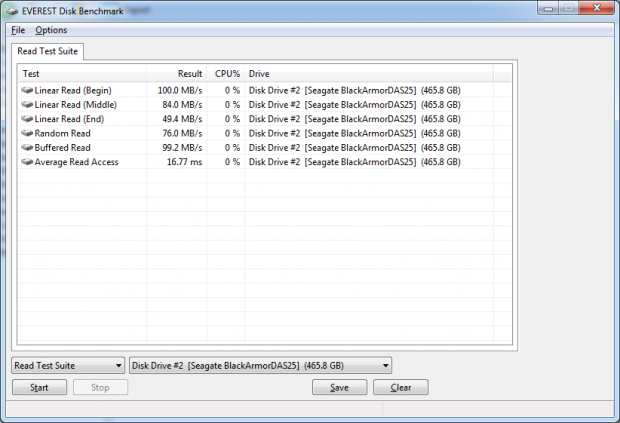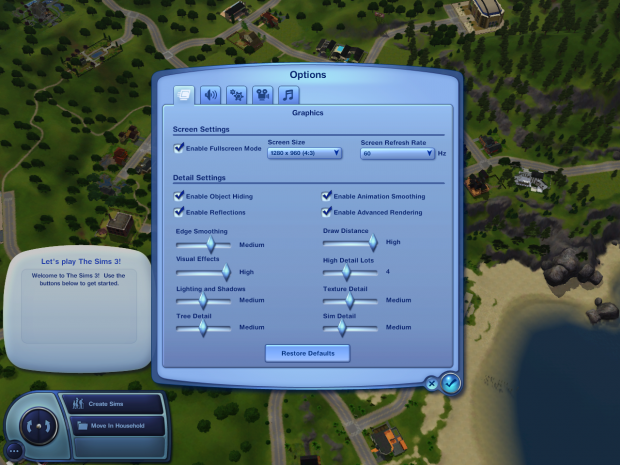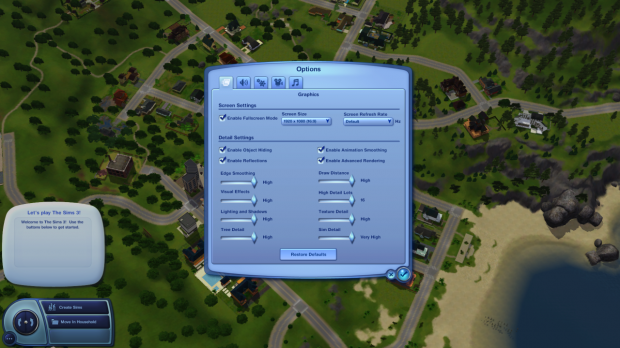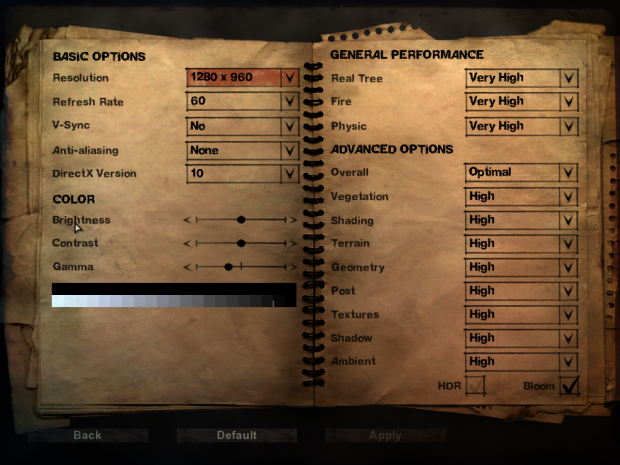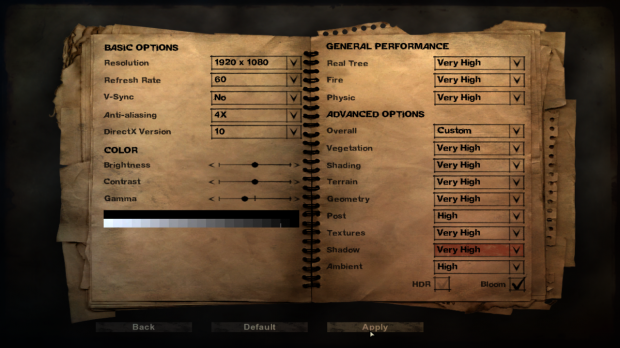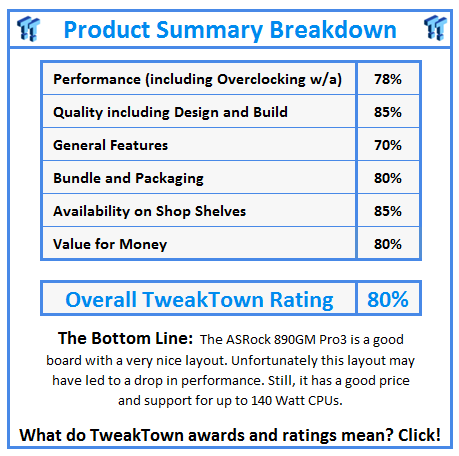Introduction
We have had more than a few ASRock board in the lab. We have even had the folks from ASRock stop by to talk to us about their products. So it comes as no surprise that ASRock has been one of the ones to send out their IGP carrying AM3 boards that are claiming full support for the Phenom II X6. As we have found out, though, not all boards that support the X6 can do so with style.
ASRock claims that their 890GM Pro3 can do so and lists some other nice features to boot. Features like core unlocking, Turbo Core, Turbo overclock setting (Turbo30, 50 and 60) and more. You get all of this for only $117 from Newegg.com.
So, let's take a look and see how gracefully ASRock's $117, 140 Watt CPU supporting motherboard handles six cores.
The Box and What's Inside
Package and Contents
The box we got with the 890GM Pro3 looks very familiar. It looks like almost all of the other ASRock boxes. There is the annoying reflective coating and purple writing. There are a few more logos than normal, but these are mostly items you could have guessed. Of course, there are a couple that are new; the free bundle is a nice touch (bundling is always good) as is the support for the Phenom II X6.
The back of the box does contain the usual hard sell items that we have gotten used to. Interestingly enough, the formatting looks a lot like one of ASRock's competitors... But we are pretty sure that is a coincidence. Of note on the back is the EPU information, the True Blu-ray feature and the Unique OC features.
Inside the box is a rather limited amount of goodies. However, this is a value board so that is not surprising.
The Motherboard
The Board
What can we say about the micro ATX form factor that we have not already talked about? In our opinion this form factor has pretty much run its course and is in need of replacement soon. However, it looks like none of the players involved are thinking this or at least none of them are willing to talk about it.
Having said that, ASRock has made a couple of departures from the usual micro ATX layout. The 24-pin ATX power connector has been moved to the very upper edge of the board. The RAM slots have also been pushed up to this area. I imagine this was a difficult thing to incorporate into the design as the tracing layout of the board will end up being very complex.
The CPU mounting area and socket also seem to be much closer to the top edge of the board than normal. It is like ASRock just pushed everything up by about an inch. The 4-pin 12Volt aux connector is nicely unobscured, but can become quickly crowded with an oversized cooler in place.
The bottom half of the board has two PCIe slots and two PCI Gen 2 slots. The single x1 slots place any add-in board directly over the 890 Northbridge. While this does help with space considerations, I would be concerned about heat build-up, especially if you are using an add-in graphics card.
The SATA port placement is unusual; ASRock has placed all five along the bottom edge running up to the lower right hand corner. This is the spot normally left for the front panel header. ASRock has also lined up all of the USB headers. They are in a neat little row between the RAM slots and the 850 Southbridge.
The ports are about what you would expect from a current board with an IGP. We see the same annoying DVI-D port that restricts what cable you can use. It would have been better to go with a DVI-I port for more flexibility. Being a lower cost board, you are more likely to have purchases that would need this type of connection than a straight dual link DVD-D connection.
Overall ASRock has made some interesting and unusual departures from traditional motherboard design. We are not sure if these will pay off or if they will be a hindrance with the more complex tracing layout. We will find out that later in the performance section.
BIOS and Overclocking
BIOS
The BIOS on the ASRock 890GM Pro3 follows the same lines as all of the other ASRock boards we have tested. It is still an AMI BIOS format with the extra features common to ASRock products thrown in. As ASRock is still a subsidiary of ASUS, you will also notice that the BIOS is very similar to the way ASUS lays their BIOSes out.
Almost everything you need to worry about is on the OC Tweaker pages. Here are all of the options for kicking your AMD CPU into high gear. If you are into playing with the IGP, there are even options to adjust that as well.
There are one or two places to drill down and tweak additional performance settings. Like the memory timings for example.
But as with most BIOSes, you are not going to get away with just hitting up this area of the setup. There are more places to hit before you can get up and running. Places like the CPU configuration, Chipset Settings, etc.
Overclocking
The overclocking on the ASRock 890GM Pro 3 was not that great. We were able to push it some, but things got very touchy once we went over 242MHz on the bus. There was nothing we could do to get things stable. We even clocked the RAM down to an extremely low setting, but that did not help. In the end I would guess that the odd tracing layout hurts the system at those speeds. Most of the blue screen errors were memory related or related to Southbridge functions.
You can see the validation for the Phenom II X6 on the ASRock 890GM Pro 3 Deluxe here.
As all overclocking results are dependent on the hardware you use, your results may vary. Results of our overclocking tests are included in the performance section with the stock scores.
Important Editor Note: Our maximum overclocking result is the best result we managed in our limited time of testing the motherboard. Due to time constraints we weren't able to tweak the motherboard to the absolute maximum and find the highest possible FSB, as this could take days to find properly. We do however spend at least a few hours overclocking every motherboard to try and find the highest possible overclock in that time frame. You may or may not be able to overclock higher if you spend more time tweaking or as new BIOS updates are released. "Burn-in" time might also come into play if you believe in that.
Test System Setup and Comments
We would like to thank the following companies for supplying and supporting us with our test system hardware and equipment ASROCK, AMD, Kingston and Cooler Master and Sceptre.
The setup on the ASRock was smooth. No issues there at all. The installer for drivers was clean and simple. Even tinkering, we had no issues with anything other than the stopper (stability wise) at 242MHz. Other than that we had a great experience with the setup and installation with this board.
Synthetic Tests - Part I
With any system you will want to see a combination of synthetic testing and real-world. Synthetics give you a static, easily repeatable testing method that can be compared across multiple platforms. For our synthetic tests we use Everest Ultimate, Sisoft Sandra, FutureMark's 3DMark Vantage and PCMark Vantage, Cinebench as well as HyperPi. Each of these covers a different aspect of performance or a different angle of a certain type of performance.
Memory Bandwidth
Memory is a big part of current system performance. In most systems slow or flakey memory performance will impact almost every type of application you run. To test memory we use a combination of Sisoft Sandra, Everest and HyperPi 0.99.
Sisoft Sandra
Version and / or Patch Used: 2010c 1626
Developer Homepage: http://www.sisoftware.net
Product Homepage: http://www.sisoftware.net
Buy It Here
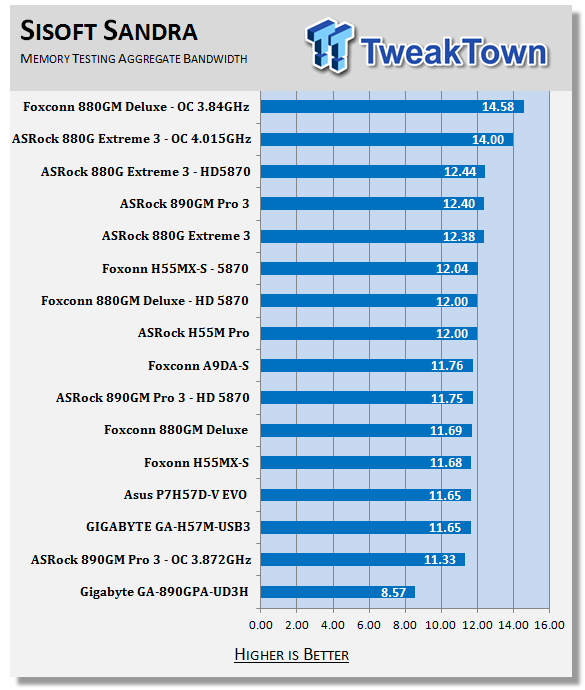
The memory performance here is about what it should be for an 890 series chipset. It is not the fastest, but it is not the slowest either.
Everest Ultimate
Version and / or Patch Used: 5.30.1983
Developer Homepage: http://www.lavalys.com
Product Homepage: http://www.lavalys.com
Buy It Here
Everest Ultimate is a suite of tests and utilities that can be used for system diagnostics and testing. For our purposes here we use their memory bandwidth test and see what the theoretical performance is.
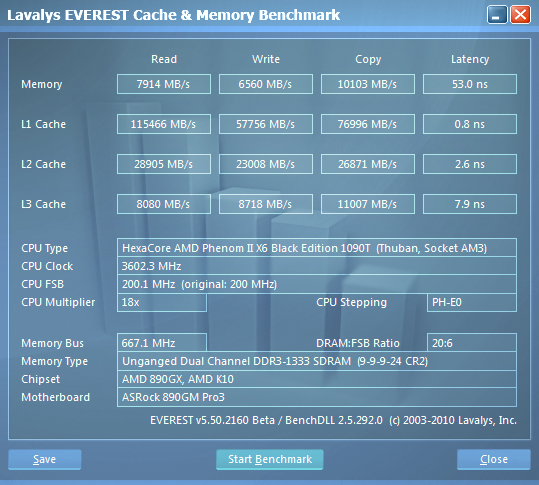
Stock Memory Performance
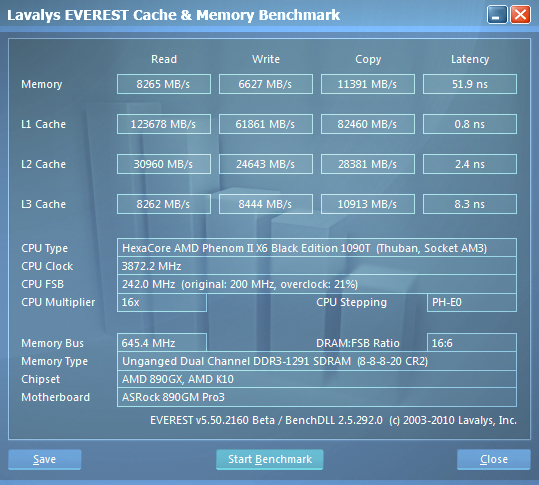
Overclocked Memory Performance
Again, the numbers here are not too bad. This is especially considering the price point this board is setup for.
HyperPi 0.99
Version and / or Patch Used: 0.99
Developer Homepage: www.virgilioborges.com.br
Product Homepage: www.virgilioborges.com.br
Download It Here
HyperPi is a front end for SuperPi that allows for multiple concurrent instances of SuperPi to be run on each core recognized by the system. It is very dependent on CPU to memory to HDD speed. The faster these components, the faster it is able to figure out the number Pi to the selected length.
For our testing we use the 32M run. This means that each of the four physical and four logical cores for the i7 and the four physical cores of the i5 is trying to calculate the number Pi out to 32 million decimal places. Each "run" is a comparative to ensure accuracy and any stability or performance issues in the loop mentioned above will cause errors in calculation.
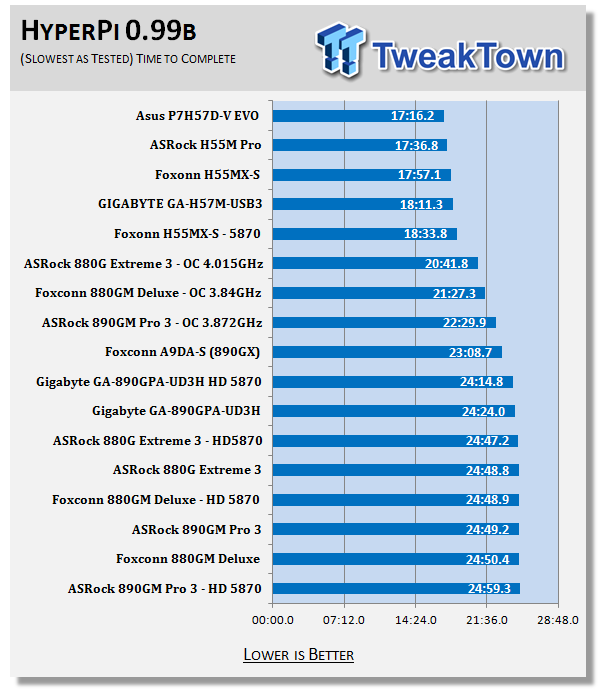
AMD CPUs and chipsets do not perform well with HyperPi (or SuperPi). The 890GM Pro3 carries that over into its performance. If we had to hazard a guess, this would be more related to the caching on the CPU than a specific board issue.
Synthetic Tests - Part II
Disk Drive Controller
The system drive controller is an important part of system performance. In most modern boards your drive controller will run off of the PCI-e bus. The PCI-e bus performance can be affected by poor trace layout as well as many other design choices that show up on different boards.
For testing we use Sisoft's Sandra and Everest.
SiSoft Sandra
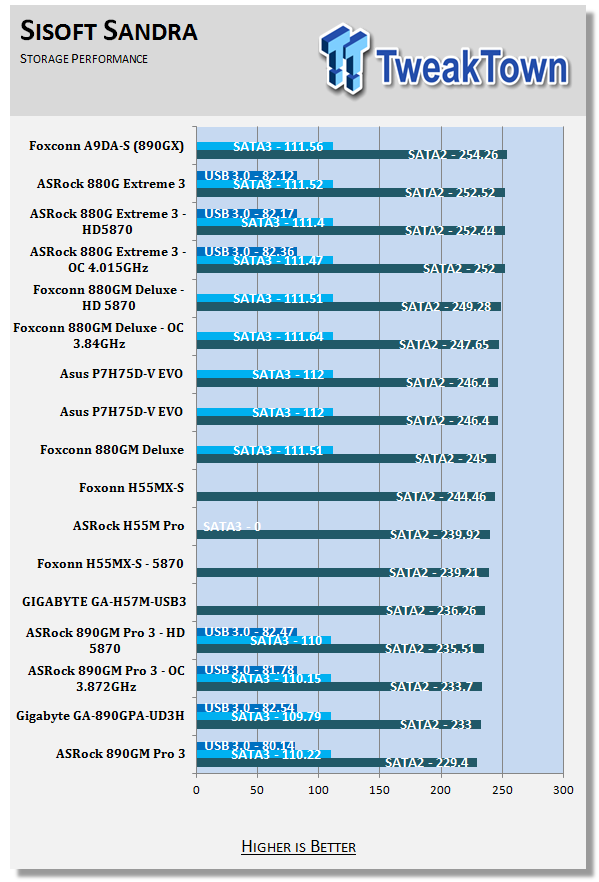
Unfortunately the ASRock 890GM Pro3 does not do so well when it comes to HDD performance. It is at the bottom of the list for both stock and overclocked performance.
Everest
Stock HDD Performance
Overclocked HDD Performance
Stock USB 3.0 Performance
Overclocked USB 3.0 Performance
Everest confirms our Sandra findings. This showing could impact future tests like AutoGK, PCMark Vantage and LightWave.
Synthetic Tests - Part III
Here is where we dig out the FutureMark tests.
PCMark Vantage
Version and / or Patch Used: 1.0.0.0
Developer Homepage: http://www.futuremark.com/
Product Homepage: www.futuremark.com
Buy It Here
For overall system performance we use PCMark Vantage. This is run in both x86 and x64 mode to give the best indication of performance.
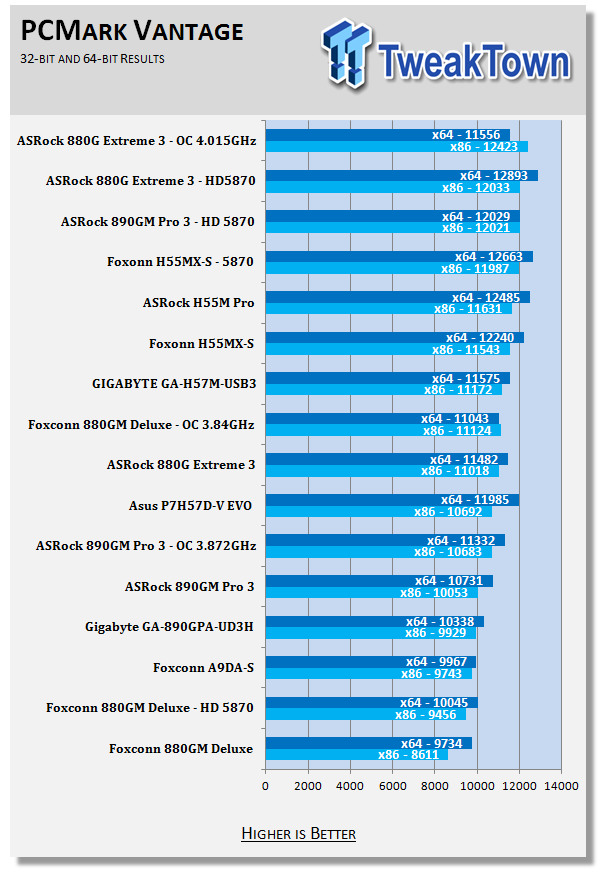
The ASRock 890GM Pro3 did fairly well with PCMark Vantage. It was not the top end board, but then again it was not the slowest. We do see the HDD performance play a part in these results, though.
3DMark Vantage
Version and / or Patch Used: 1.0.1
Developer Homepage: http://www.futuremark.com/
Product Homepage: www.futuremark.com
Buy It Here
For synthetic gaming tests we used the industry standard and overlockers bragging tool 3DMark Vantage. This is a test that strives to mimic the impact modern games have on a system. Futuremark went a long way to change from the early days of graphics driven tests to a broader approach including physics, AI and more advanced graphics simulations.
3DMark Vantage uses the DX10 API in addition to having support for PhysX. As we are no longer using an NVIDIA GPU for testing (at least until we can get a GTX 4xx card) you will only see the CPU based PhysX results in the scores. For testing we use the Performance test run.
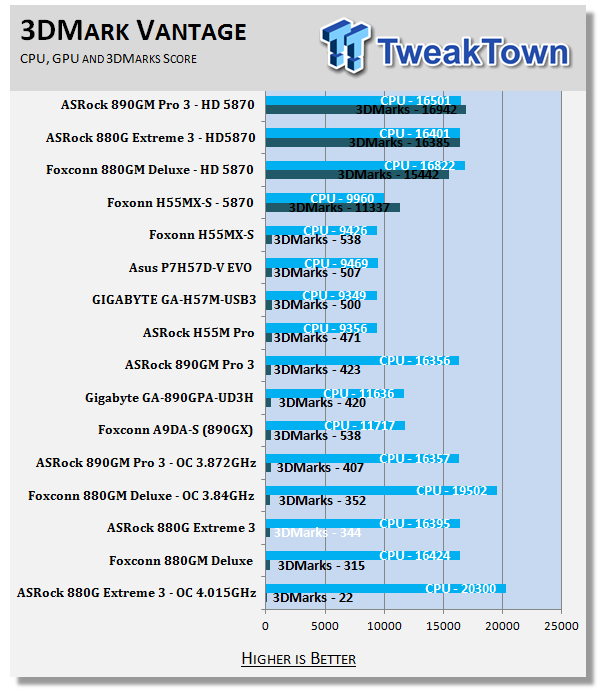
In an interesting turn the 890GM Pro3 was at the top of the list for the 890GX boards we have tested. This was something of a shock to us as the performance we saw in other tests would not have seemed to lead to this.
Cinebench R11.5 x64
Version and / or Patch Used: R11.5 x64
Developer Homepage: http://www.maxon.net/
Product Homepage: www.maxon.net
Download It Here
Cinebench is a synthetic rendering tool developed by Maxon. Maxon is the same company that developed Cinema4D, another industry leading 3D Animation application. Cinebench R11.5 tests your systems ability to render across a single and multiple CPU cores. It also tests your systems ability to process OpenGL information.
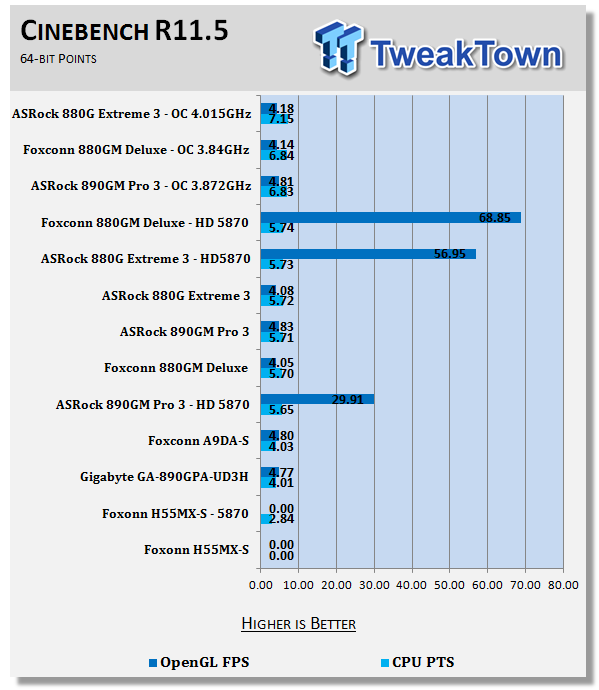
Again we see decent performance from the ASRock 890GM Pro3. It is close to the top, but not at the top.
Real-World Tests - Part I
Real-world testing allows us to see how well a product will perform when used in the same manner as it would be in your house or office. It is an important side to performance testing as it can uncover hidden glitches in the way a product performs.
It is especially true when testing a mainboard; there are so many components of a board that have to interact that any problems between parts can cause a failure of the whole.
For real-world testing we use some common applications and functions. We test with LightWave 3D for rendering performance, AutoGK for transcoding from DVD to AVI and two games for gaming testing.
Rendering
Rendering of 3D Animation is a system intensive endeavor. You need a good CPU, memory and HDD speed to get good rendering times. For our testing we use LightWave 3D. This software from Newtek is an industry standard and has several pre-loaded scenes for us to use.
LightWave 3D
Version and / or Patch Used: 9.6
Developer Homepage: http://www.newtek.com
Product Homepage: http://www.newtek.com/lightwave/
Buy It Here
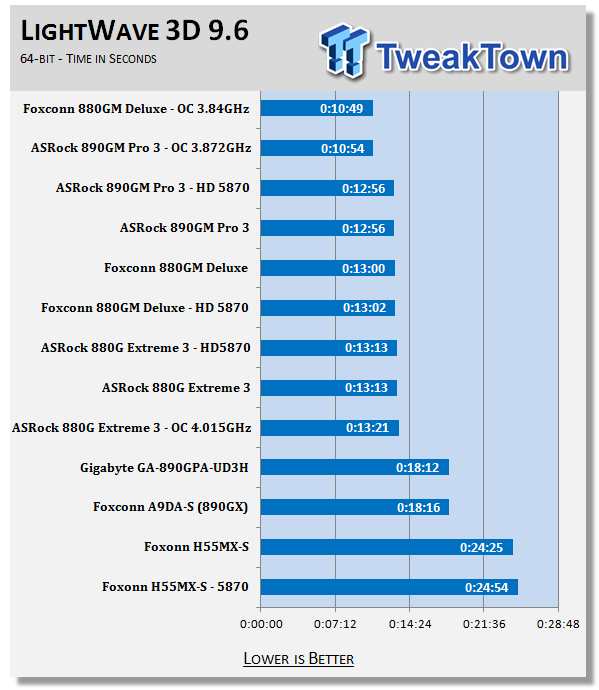
Ok, now this one is impressive. The ASRock 890GM Pro3 holds 2nd through 4th place in the testing order. It is only five seconds behind the leader here (although in real world usage that would be a pretty big deal).
AutoGK
Version and / or Patch Used: 2.55
Developer Homepage: http://www.autogk.me.uk/
Product Homepage: http://www.autogk.me.uk/
Download It Here
AutoGK stands for Auto Gordian Knot; it is a suite of transcoding tools that are compiled into an easy to install and use utility. It allows you to transcode non-protected DVDs and other media to Xvid or Divx format. For our testing purposes we use a non-DRM restricted movie that is roughly 2 hours in length. This is transcoded to a single Xvid AVI at 100% quality.
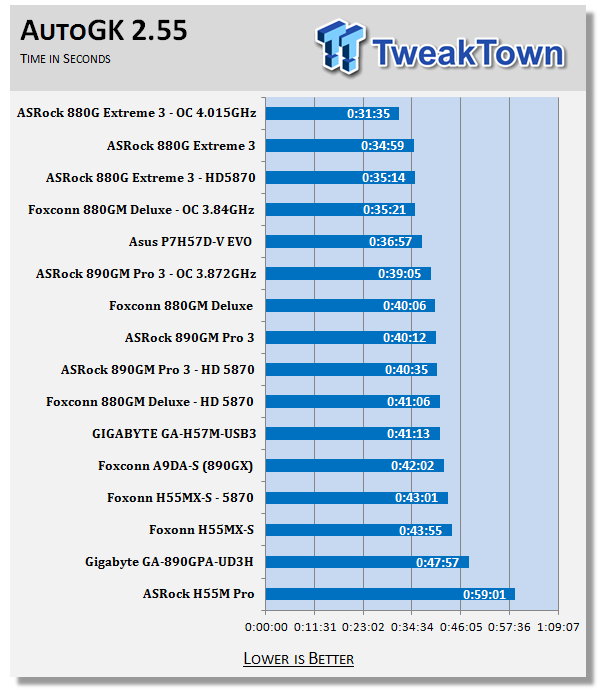
For AutoGK the 890GM Pro3 does ok; it comes in around the middle of the pack for our transcoding tests.
Real-World Tests - Part II
Here we have our real gaming tests. Each of the games we chose uses multiple cores and GPUs. They are able to stress the system through use of good AI. Both have decent positional audio that adds impact to the sound subsystem of the board. We ran each game through the level or parts listed and recorded frames per second using FRAPS. This brings the whole game into play.
As most IGPs are not meant for high-end gaming we have swapped out one of our First Person Shooters for a more mainstream game. We have also adjusted down the testing resolution from 1920x1200 to 1280x960. In order to keep full measure of the board we return to 1920x1200 when we test the board with our HD 5870.
SIMS 3
Version and / or Patch Used: 1.0
Timedemo or Level Used: Ten Minutes of Game Play in Sunset Valley
Developer Homepage: http://www.ea.com/
Product Homepage: http://www.thesims3.com/
The SIMS 3 is the third complete edition of this popular game. In it you create a personality for use in a virtual world. The town we chose was Sunset Valley, we created a basic character and off we went. We performed as many actions as we were able to in order to give the board and GPU as much to think about as we could. The settings we used are shown below.
Settings for IGP testing at 1280x960
Settings for the HD 5870 testing at 1920x1200

You are really not going to want to game with the IGP on the 890GM Pro3. It is not up to SIMS 3 even with the reduced settings we use for IGP testing. True, if you were to turn everything down you would probably be able to get decent frame rates, but at that point it would not be worth the effort.
Far Cry 2
Version and / or Patch Used: V1.00
Timedemo or Level Used: Clearing the Safe house through to the Rescue
Developer Homepage: http://www.ubi.com
Product Homepage: http://farcry.us.ubi.com
Far Cry 2 is a large sandbox style game. There are no levels here so as you move about the island you are on you do not have to wait for the "loading" sign to go away. It is mission driven so each mission is what you would normally think of as the next "level".
In the game you take the role of a mercenary who has been sent to kill the Jackal. Unfortunately your malaria kicks in and you end up being found by him. Long story short, you become the errand boy for a local militia leader and run all over the island doing his bidding. The settings we used for testing are shown below.
Settings for IGP testing at 1280x960
Settings for the HD 5870 testing at 1920x1200
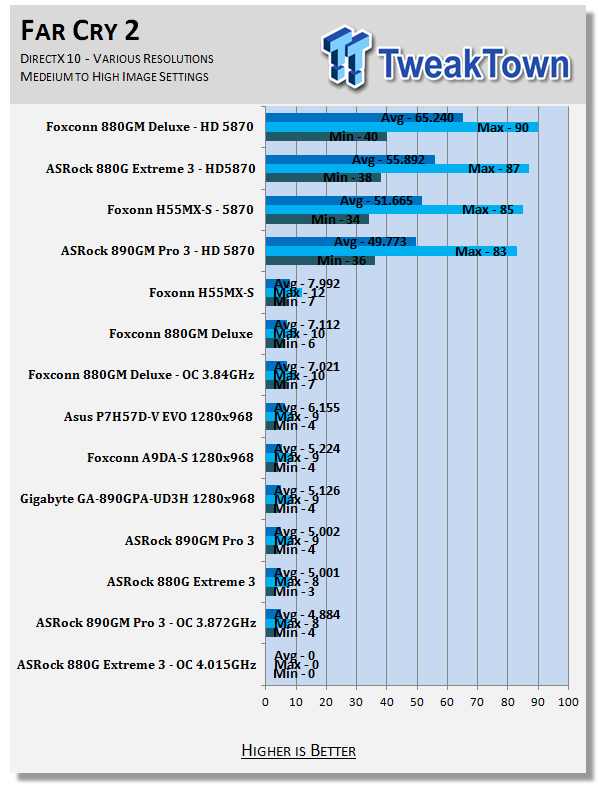
Again we see gaming performance (from the IGP) that is so low as to be ridiculous. When you do drop in a discrete GPU all that changes, but that is more money to spend to get there.
Gaming Conclusion
The ASRock 890GM Pro3 when using the IGP is not a gaming product. You could, if you really wanted, play a few very simple games, but nothing complex at all.
First person gaming is probably right out the window. Still, you can drop in an add-in board and get decent gaming performance if that is what you are looking for.
Power Usage and Heat Tests
Power Consumption
We are now able to find out what kind of power is being used by our test system and the associated graphics cards installed. Keep in mind; it tests the complete system (minus LCD monitor, which is plugged directly into an AC wall socket).
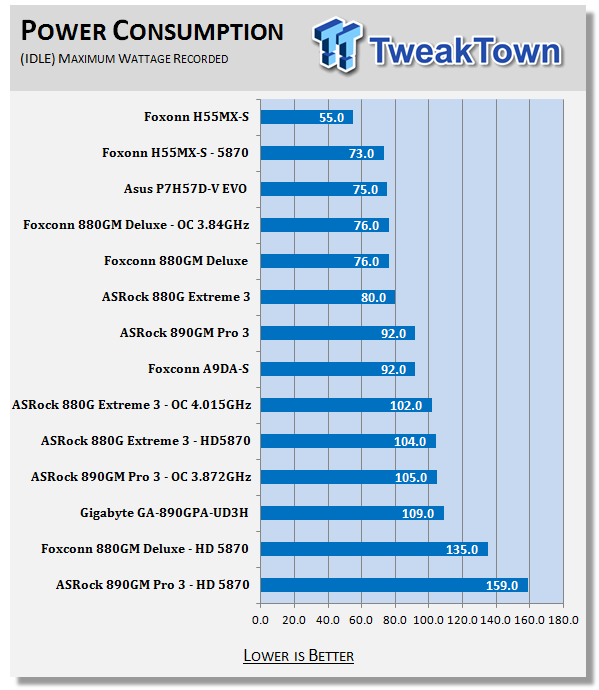
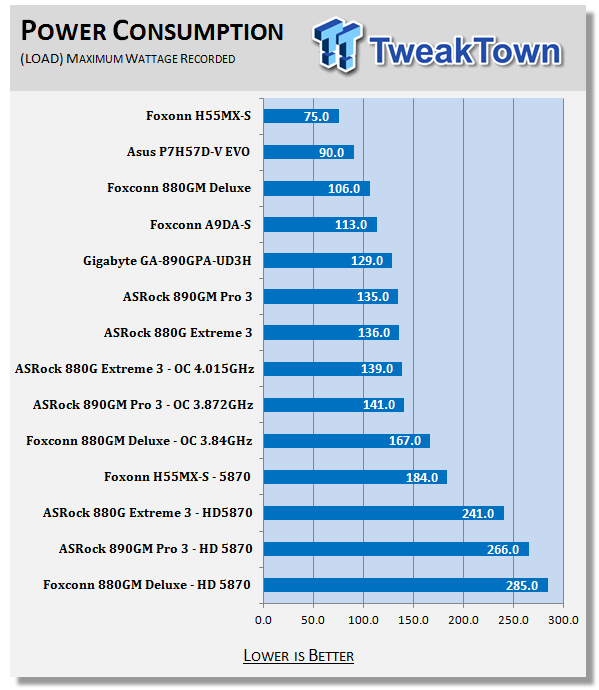
Unusually for an AMD based product the ASRock 890GM Pro3 pulls quite a bit of power from the wall. We were more than a little surprised to see this even at stock speeds.
Heat Generation
As a new measure, we are now monitoring the heat generation from the key components on the motherboard; this being the Northbridge, Southbridge (if it contains one) as well as the Mosfets around the CPU. The results are recorded at idle and load during the power consumption tests.
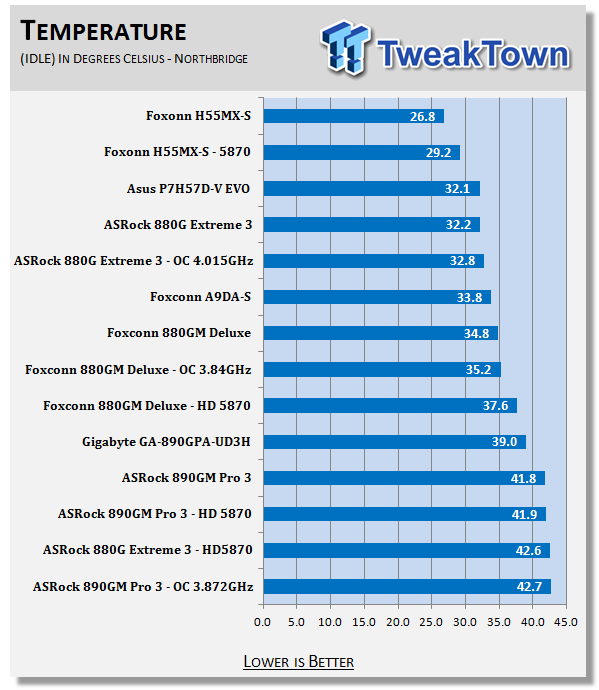
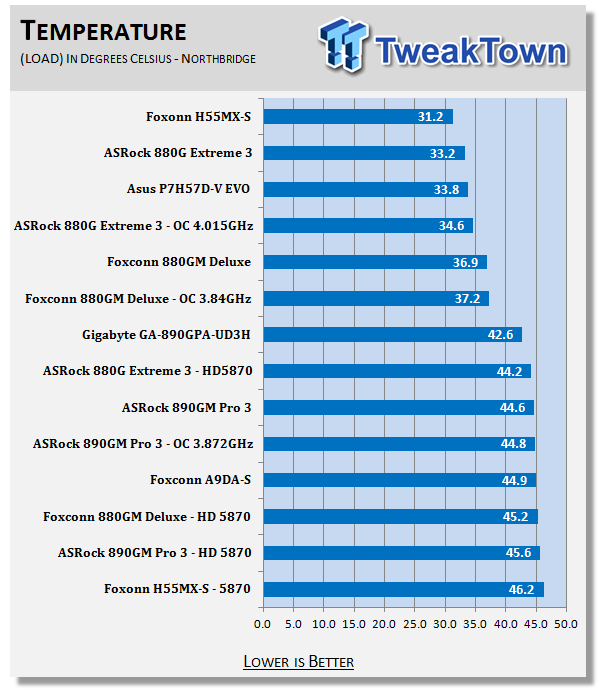
Heat generation was also much higher than we expected; not terribly much, but we think that the shortened cooling might have something to do with this.
Final Thoughts
Working with the ASRock 890GM Pro3, I was a little disappointed. I had thought that I would see more performance out of this board given the performance we have seen from other ASRock boards. The performance was not bad; it was actually about average for an 890GX based board. It is just that we have gotten used to seeing much more.
We have a feeling that the more creative layout may be the cause of some of the performance issues. ASRock would have had to make a much longer and complex tracing system to accomplish the layout we see here. This impacted the HDD and memory performance which in turn impacted the performance of other tests.
Of course you are still getting a decent board and only spending $117. You could pick this board up and with its higher wattage CPU support you could drop in a higher speed CPU, then a good add-in GPU. We just would not recommend it as a standalone system, unless you are just looking for basic 2D performance.

